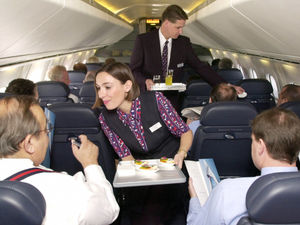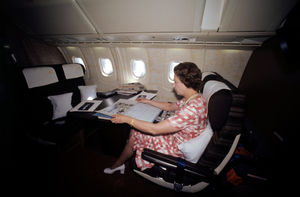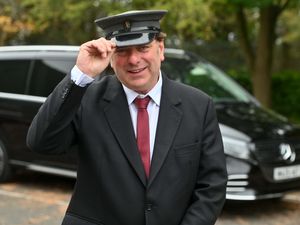Remembering final flight of aviation icon Concorde
It was the fastest supersonic commercial aircraft in aviation history – and the most loved.

Concorde will forever hold a special place in the hearts of those who were lucky enough to step on board as well as those who merely dreamed of being a passenger.
Today marks 20 years since the plane made its final flight with another sonic boom, drawing to a close 34 years of memories.
So, will we ever see another Concorde or should we leave it as a piece of history?
With a take-off speed of 250mph and a cruising speed of 1,350mph – more than twice the speed of sound – a typical London to New York crossing would take a little less than three and a half hours.
Concorde could pick up passengers at breakfast time in the capital and transport them to the US before it was time for breakfast – the same day.
The supersonic jet, which was the result of a partnership between Britain and France, cut transatlantic journey times by more than half, but sonic booms – the noise we hear on the ground when a plane travels faster than sound – limited it to transoceanic flights only.

Often described as the most glamorous airliner the world has seen, it was rare to have a flight without at least one famous passenger, from royalty to rock stars to supermodels.
The late Queen Elizabeth II often used Concorde for state visits including her Silver Jubilee tour of Canada and the West Indies in 1977.

Flying on Concorde was considered the ultimate luxury and it captured the imagination of aviation enthusiasts around the globe.
Many still mourn the loss of the distinctive aircraft which made its first flight in 1976 and would love to see another Concorde fly in the future.
There was much excitement when news reports revealed ‘Concorde’ was to take to the skies again to mark the 20th anniversary of the aircraft’s final flight.
However, our hopes were quickly dashed when it turned out to be a radio-controlled 11ft model of the iconic plane that would be taking off in Somerset.
Concorde wasn’t without its problems and many experts have doubts about whether there is a need for supersonic travel in today’s world.
The noise Concorde made caused controversy and before the end of its service, rising fuel costs were beginning to take their toll on the airline’s profitability.
Then in 2000, the plane’s public image was dented when an Air France Paris to New York service crashed, killing all 100 passengers and nine crew members.
The result was a drop in demand, which reduced even further after the September 11 terror attack on the World Trade Centre.
In April 2003, British Airways and Air France announced they would be permanently grounding the airliners because of “commercial reasons, with passenger revenue falling steadily against a backdrop of rising maintenance costs for the aircraft”.
The aircraft’s retirement was seen by many to be a step backwards, with flights from London to New York now taking more than twice as long.
Technology is constantly advancing but in the field of supersonic travel, so far, nothing has taken Concorde’s place.
Twenty years on, it still represents an important piece of engineering and aviation history and is proof of what’s possible when two counties work together with a common goal.
Earlier this year, NASA revealed it was exploring the potential for a supersonic jet that could take commercial passengers from London to New York in 90 minutes. The US Space Agency has been working to design an aircraft with technology that reduces the loudness of a sonic boom, which could open up opportunities for commercial airlines.
The X-59, a Concorde-like research jet can cruise at 937mph at an altitude of 55,000ft without generating an unacceptable noise level.
NASA is expected to start test flights over US cities next year and will be collecting data from residents on what they hear.
So, we may not have seen the end of supersonic travel yet and if the tests prove successful in changing aviation rules so that flights with the potential to create sonic booms are allowed over populated areas, who knows what the future holds?
Maybe we will see a massive reduction in journey times to the likes of Australia and New Zealand?
Concorde may have been grounded but its legacy lives on in the spirit of aviation innovation.





